Green Acre #104: Dog Eat Dogwood
MICHAEL WAS RUNNING backwards up a hill at the National Arboretum in Washington DC, lean muscles glistening, as I race-walked in forward beside him. He was 19 and training to be a boxer.
“I want to drive to England,” he said, apropos of nothing.
“You can’t drive Michael,” I panted. “There’s an ocean between here and there.”
“I’ll take the bridge,” he said.
Michael, a high school graduate, was sadly under-educated yet so eager to learn. Later, I showed him a world map.
He and I were working for a remaindered-book company with a warehouse nearby; I handled sales to stores in New York and processed mail orders. He was in packing and shipping, the only one of that little cabal not terminally stoned.
The Arboretum was like a midday vacation someplace far away from the truck-roar grubbiness of Bladensburg Road and New York Avenue, where a motel a few blocks away did a big business in hourly room rentals.
This was another world, where the trees were tall and shaded the paths; the flowers were an ever-changing display: roses, azaleas, lilacs, peonies. We’d pause near the lake for sandwiches and look at the ducks.
I don’t know what became of Michael, but 35 years later the Arboretum is still magical, a vacation from stress and a place for dreams to romp.
If you have a convertible, it’s a fine place to drive about with the top down, though, no matter the vehicle, that’s always best done on a weekday—driving (or walking) on weekends can sometimes be as pleasurable as crossing the Bay Bridge on Friday afternoon. On weekdays the byways are quiet, you’re alone with the birds, and you can plant your face in a rose bush for an hour without feeling foolish.
The Prince and I were playing hookie the other day, grabbing a square inch of stray sunshine and heading off to see what was what.
Sadly, it was a day when the roses had just been sprayed and no nose-plant was possible so we tootled around in our ancient Mustang (a little battered and wheezy at 29 but still chugging along), passing the fading azaleas, the Asian gardens (we did those last trip), the conifers (sorry, boring) and on to the dogwoods, still in spectacular flower.
The Arboretum boasts a long dogwood flowering season, with 227 cornus (as the trees are formally grouped) beginning to bloom in March and continuing into June when the Chinese dogwoods cap off the season with their full and creamy blossoms. Even out of flower the trees are splendid, with red fruit emerging in summer and leaves that turn to coral, burgundy and red in the fall.
Though the oldest tree was planted in 1943, the group was formally designated as the Dogwood Collection in 1952, we’re told. The dogwoods now bound down a long grassy slope leading to the Anacostia River, which can be seen from two overlooks along the way. Some of the dogwoods are shrubby, others ballerina graceful; there’s a weeping variety, another is smooshed down flat-topped as if Zeus were pressing a heavenly hand upon its crown; and several giants appear to be pushing 30 feet. Neat markers, with each tree’s common and Latin names, are at the base of each trunk.
There are 96 varieties represented. As a group, dogwoods are not especially long-lived. Most of the collection dates only to the early 1990s and many trees are already approaching their sell-by date, to put it gently; a useful, though sad, detail if you currently have a mature dogwood or two cheering your own garden.
But under these branches you needn’t worry about life spans or maintenance. The pleasure is pure. Pack a brunch or lunch and settle in the grass, on one of the benches tucked amid the trees, or overlooking the river, or sit by the pond at the path’s terminus.
Take the pooch if you wish. It’s a dog meet dogwood world out there.
—Stephanie Cavanaugh
LittleBird “Stephanie Gardens” reports on the leafy world around her every Thursday.
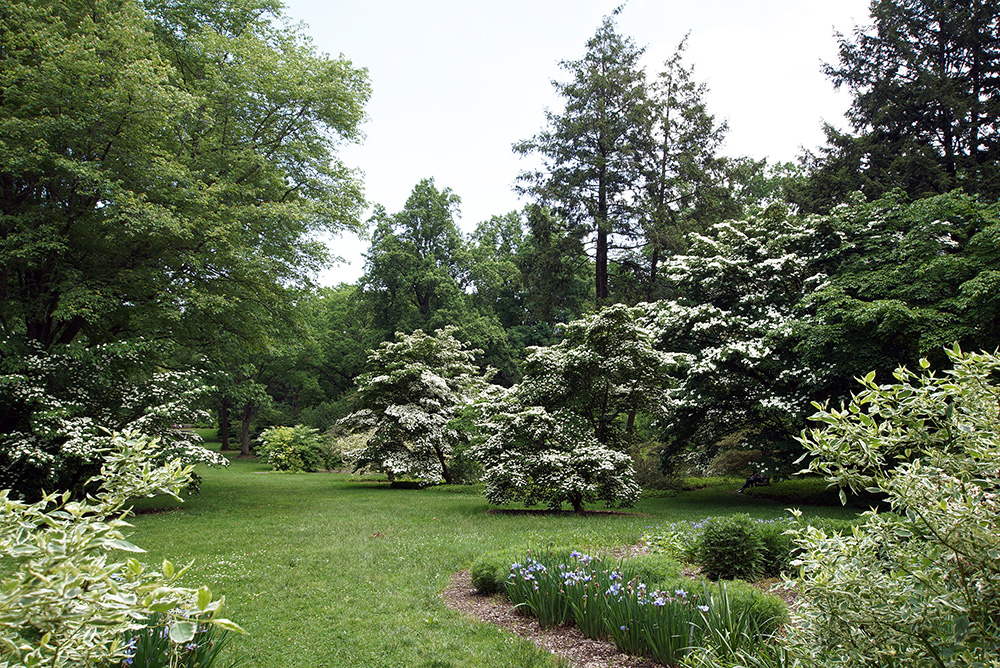
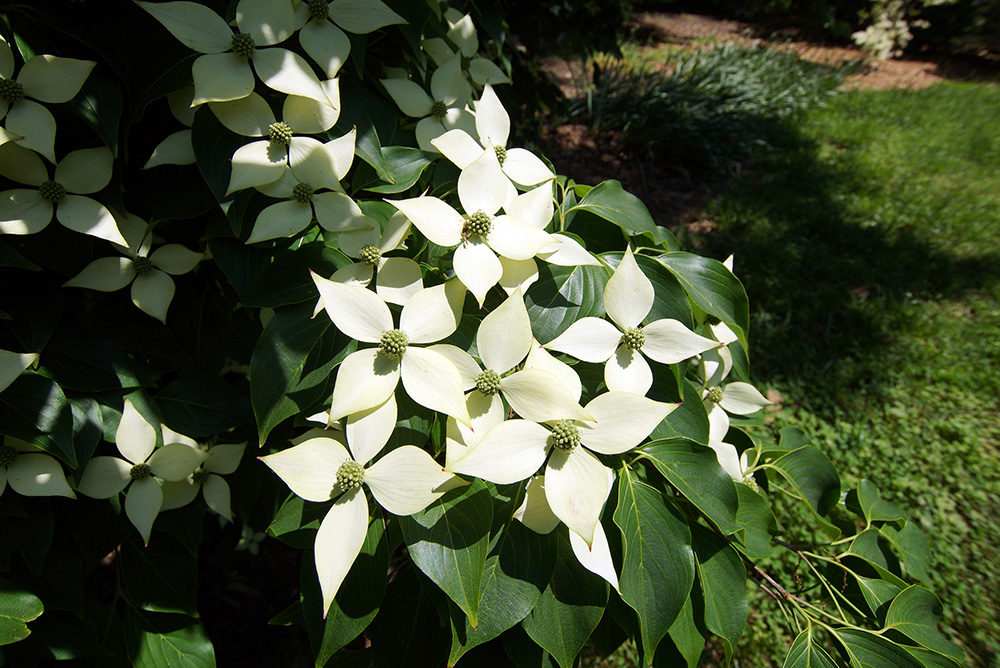
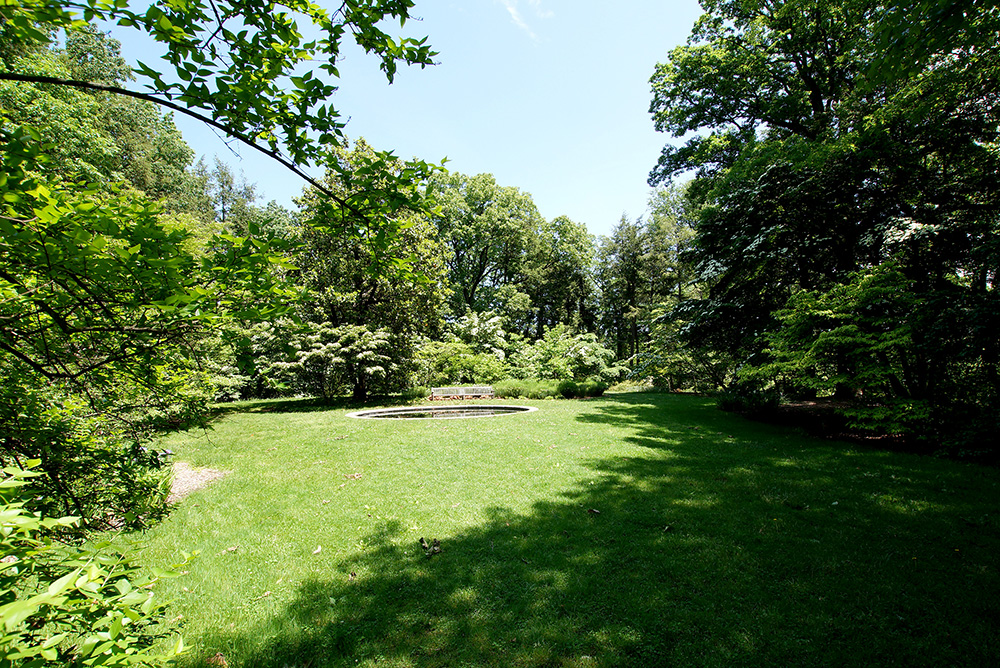
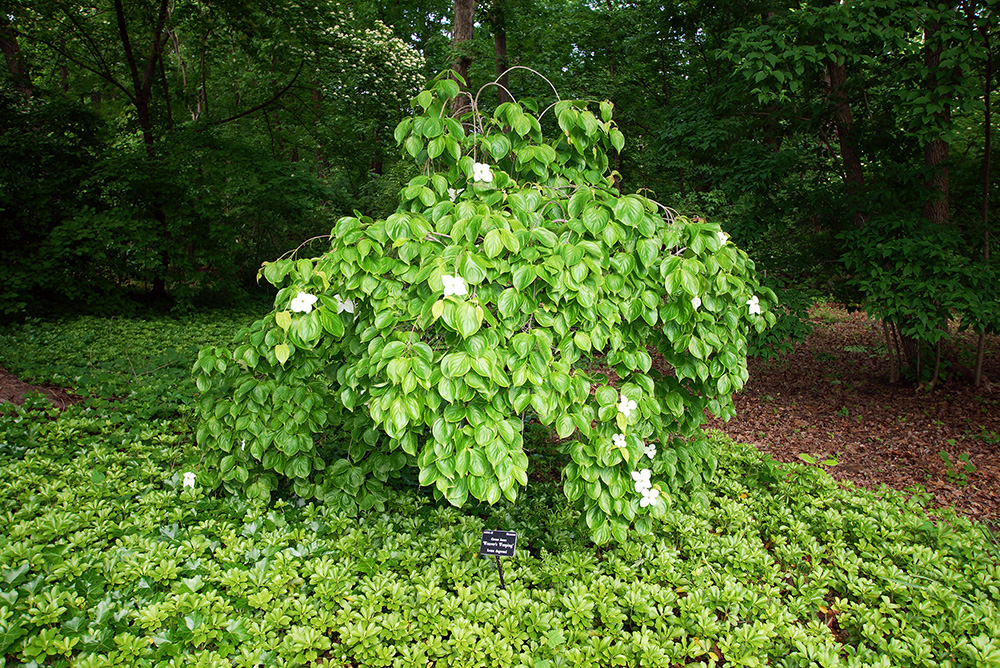
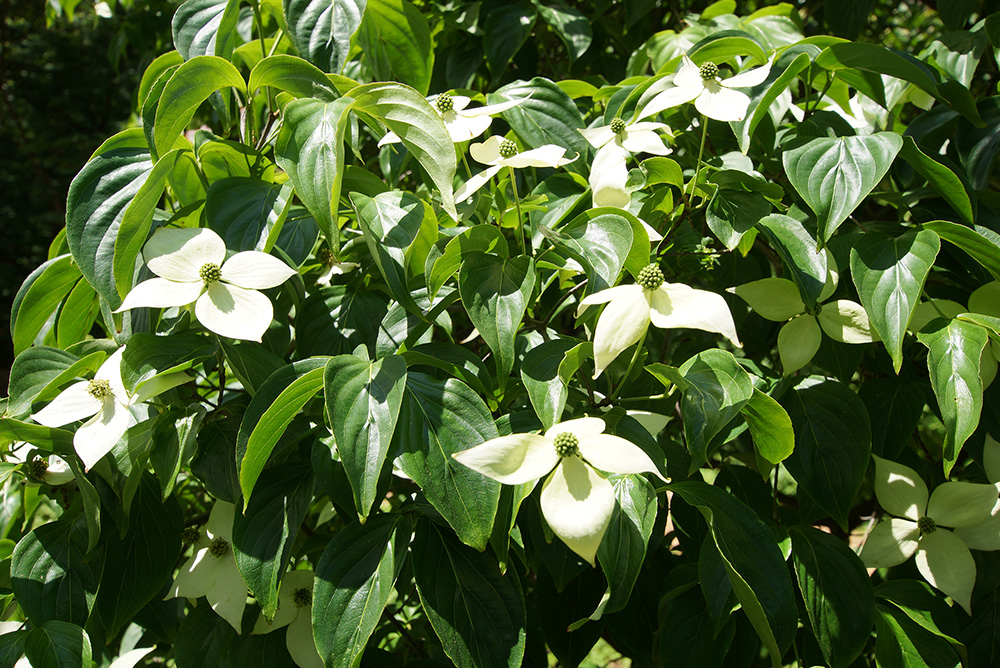
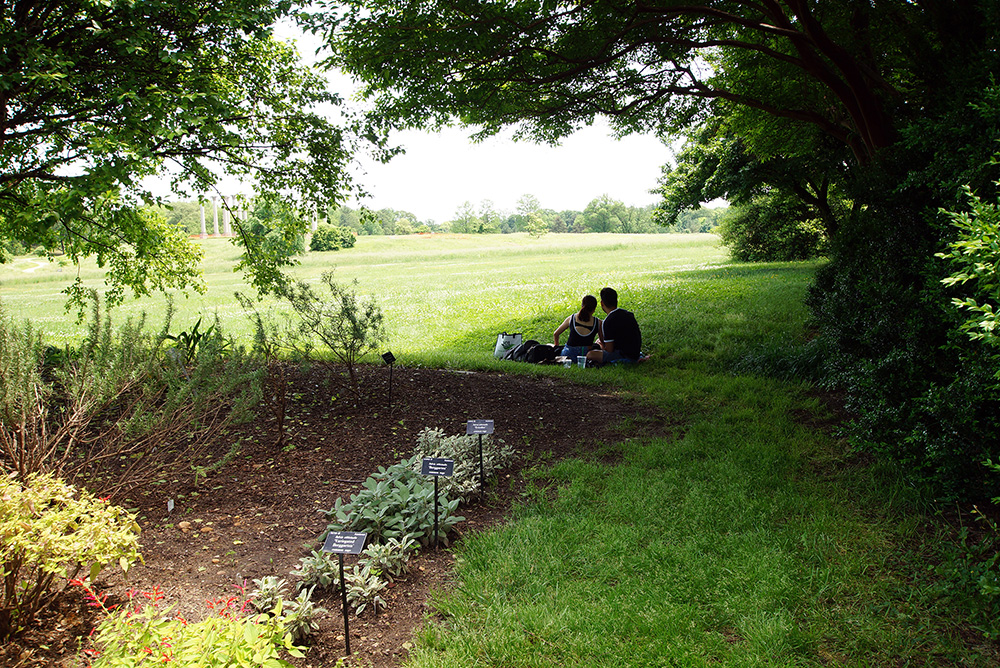
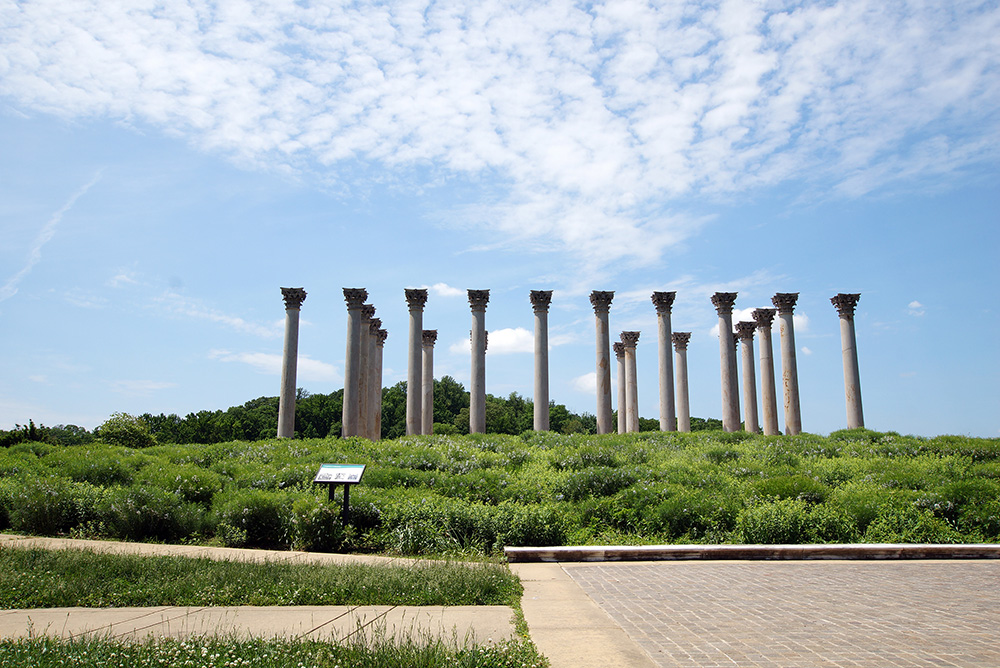

Dear Stephanie,
I am writing as a Board Member of the Friends of the National Arboretum (FONA) to thank you for this and other articles. I agree, the Dogwood Collection at the National Arboretum is among the loveliest at this time of year. Your articles referencing the Arboretum have been wonderful to read and we at FONA appreciate your good press.
All my best,
Liz Dugan
Friends of the National Arboretum